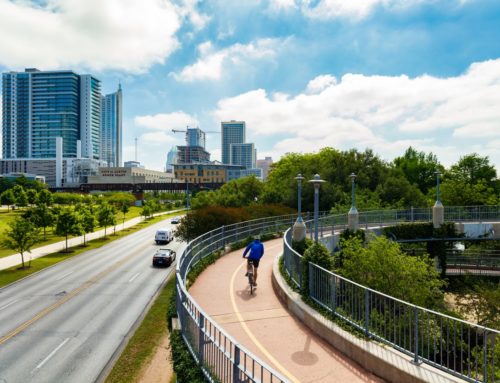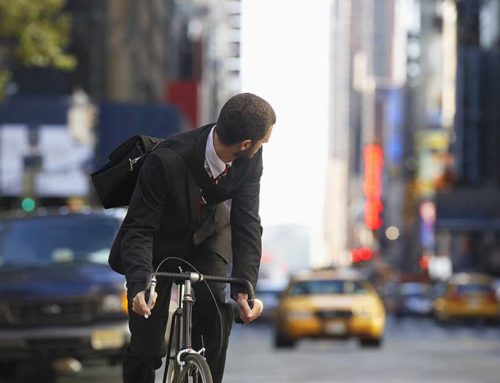Chicago is widely recognized for how accessible its roads are to bikers. In fact, the city was awarded Silver status by the League of American Bicyclists for its bike-friendliness. It’s one of the largest cities to earn this award, and Illinois as a whole is the fifteenth-highest-rated state in the U.S. for its accommodation of cyclists.
However, bicycle accidents in Chicago still happen. When you look at the raw numbers, over 1,700 bicycle accidents happen every year.
Chicago Bicycle Crash Statistics
According to the Chicago Data Portal, the city had 1,717 bicycle accidents in 2022. That year, almost 70% of Illinois collisions between bicycles and automobiles happened in Chicago.
Notably, most of Chicago’s bike accidents happened during the summer — over 55% of bicycle crashes in the city happened from June through September.
Deaths and Injuries From Bike Accidents in Chicago, IL
According to the Chicago Data Portal, Chicago had five fatal bike accidents in 2022, and another 1,250 caused a non-fatal injury. This means over 73% of Chicago bike accidents caused fatal or non-fatal injuries. In other words, only 27% of bicyclists walked away from their accident uninjured that year.
Of those who suffered a non-fatal injury:
- 183 had an incapacitating injury that necessitated ambulance transportation to a hospital
- 881 had a non-incapacitating injury that was visible but did not require an ambulance
- 186 had a reported injury that produced pain or other symptoms without producing a visible wound
These numbers indicate the severity of the injury at the accident scene, but they do not tell you about the long-term effects of those injuries. For example, a reported injury like back pain could arise from a herniated disc, which doctors cannot repair. As a result, cyclists could suffer from permanent disabilities that interfere with their ability to work or participate in other activities.
Causes of Chicago Bicycle Accidents
According to the Chicago Data Portal, cyclists were clearly to blame for only about 140 of 2022’s 1,717 bicycle accidents. Some reasons for bicycle crashes blamed on cyclists included:
- Crossing against a traffic signal
- Crossing a road outside a crosswalk
- Failing to yield at an intersection
- Intoxicated riding
Conversely, automobile drivers contributed to over 90% of bicycle crashes in 2022. Some of the reasons for these crashes included:
Failing to Yield
Unfortunately, drivers often fail to yield to bicyclists at intersections and crosswalks. Sometimes, these accidents happen because drivers do not spot the cyclist before maneuvering. But many times, the driver sees the cyclist but chooses not to stop. This can happen because drivers think they can beat the cyclist or that the cyclist will yield to them. Accidents can also happen when drivers ignore laws that give bicycles the same right to use the roads as automobiles.
Making an Unsafe Turn
A Chicago bicycle accident can also occur when drivers either turn left in front of an oncoming bicyclist or turn right into a cyclist in a bike lane or on the shoulder. These accidents often happen when careless drivers do not look for bicycles before making a turn.
Drifting Out of a Lane
Bicycle lanes are supposed to protect cyclists, but often, nothing more than a painted white line separates them from motor vehicles. As a result, any careless driver can drift out of their lane and into a bike lane, striking the cyclist.
Even worse, many Chicago roads lack even these minimalistic bike lane markings, and bicyclists riding on the shoulder can get hit by drivers who pass them without leaving enough space for them.
Locations of Bicycle Accidents in Chicago, IL
Most Chicago bicycle accidents happen on roadways. In fact, the most common position for bicyclists during a collision in 2022 was in a bike lane or on the shoulder. The latter is exactly where the bicyclist is supposed to ride when no bike lane is present.
The second-most common location for bicycle accidents in Chicago is at an intersection. Contrary to what many drivers believe, a bicycle is treated just like every other vehicle when determining who has the right of way.
Chicago Bicycle Infrastructure
Chicago has extensive bicycle infrastructure and plans to expand bicycle access. When completed, Chicago will have 645 miles of bikeways.
This bicycle network includes six types of bikeways already found across the city:
Chicago Bike Lanes
These bikeways include painted lines on the road, which motor vehicles must not cross. When making a right turn or parking on the right shoulder, vehicles can cross the bike lane after yielding to bicycles.
Bike lanes are easy to install because they only require paint. However, painted lines provide no physical protection for cyclists from vehicles on the road.
Chicago Buffered Bike Lanes
Buffered bike lanes are also designated with paint. But instead of a single line, these lanes have double lines on both sides of the lane. These lines give bicycles a wider buffer from vehicles in the travel lanes and parked vehicles on the shoulder.
Chicago Protected Bike Lanes
This bikeway has plastic posts between the vehicle lanes and the bike lane to separate motor vehicles from bikes physically. These bike lanes provide the greatest protection for cyclists riding on roadways, but they cost more due to the cost of installing the barrier.
Chicago Neighborhood Greenways
Neighborhood greenways are residential streets converted to low-speed roads to protect cyclists and pedestrians. Bikes and motor vehicles share these roads, but reduced speed limits and traffic humps help minimize the danger to motor vehicles.
Chicago Marked Shared Bike Lanes
These bikeways are similar to neighborhood greenways because bicycles and cars share the same travel lane. These lanes provided the lowest level of protection for cyclists. Chicago typically installs these on narrow roads without enough space for other types of bike lanes.
Chicago Off-Road Trails
Trails are exclusively available for non-motorized traffic like joggers and cyclists, but they don’t typically provide an efficient way to travel to a specific destination.
Biking Safely in Chicago
Chicago’s Department of Transportation provides a bikeway map with instructions for taking your bike onto all forms of public transportation. Between the extensive bikeway network and CTA’s bus and train network, you can reach almost any destination in Chicago by bicycle.
Thanks to Chicago’s efforts to make the city safer for cyclists, you can enjoy a relatively high level of protection. However, it’s no less important to be careful and stay on your guard.















Leave A Comment